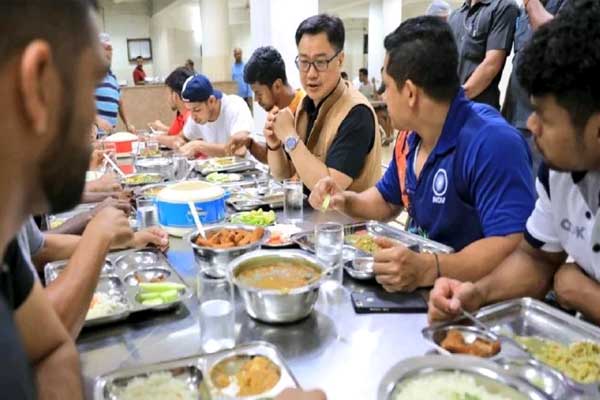Sport Minister, Kiren Rijiju announced last week diet budget of the SAI trainees, senior and junior athletes will be increased to bring parity. News agency PTI reports more.
Earlier, the diet budget of SAI trainees, junior athletes and senior athletes was Rs. 250, Rs. 480 and Rs. 690 respectively but the Rijiju has decided to make the amounts equal.
Speaking about his decision, Rijiju said, “While having my meal at the athletes mess (at the National Institute of Sports) in Patiala, I noticed senior and junior athletes and SAI trainees have different diets since the food budget for each section is different.
“However, diet is the key for the success of a sportsperson and no child can become a World Champion with inadequate diet. The diet of an athlete should not depend on the level of at which he or she is playing, but on the need of the athletes as per recommendation of coaches and nutritionists, budget cannot be deciding factor while planning an athlete’s diet.
“I have therefore decided that going forward, there will be no discrepancy in the food budget of athletes who are training at SAI centers,” added the Minster after having breakfast at the Women’s hostel here at NIS Patiala.
Rijiju visited their mess and the kitchen to take a firsthand report of the quality of the food and the way it is prepared for the athletes. He has also assured that the kitchens in all SAI centers will be modified and turned into state-of-the-art to ensure that nutrition value of food is not lost.
The Minster also announced that besides food, supplements required by athletes, as per prescription, will also be made available without delay.
The move will also impact 12,500 athletes training various SAI centers and the sports ministry will increase an additional amount to Rs 150 crores annually to fund the new diet budget.
During his visit, Rijiju met athletes from various sporting disciplines like volleyball, boxing, athletics, weight lifting and spoke to them and their coaches at length. He inquired about the quality of food served, training regimes and requirements for added facilities and infrastructure.
Disclaimer:
The information contained in this article is for educational and informational purposes only and is not intended as a health advice. We would ask you to consult a qualified professional or medical expert to gain additional knowledge before you choose to consume any product or perform any exercise.






